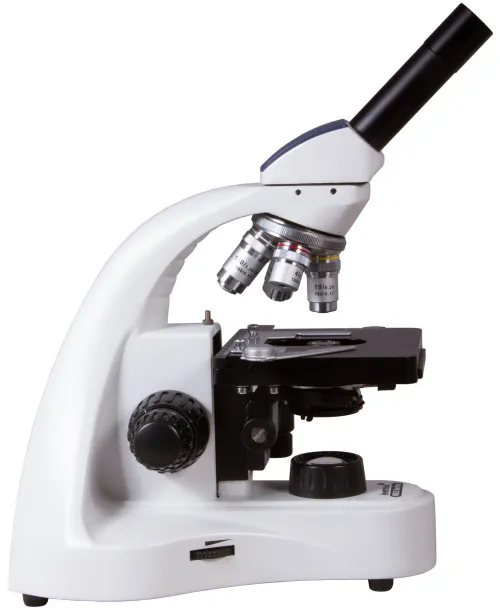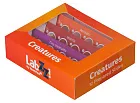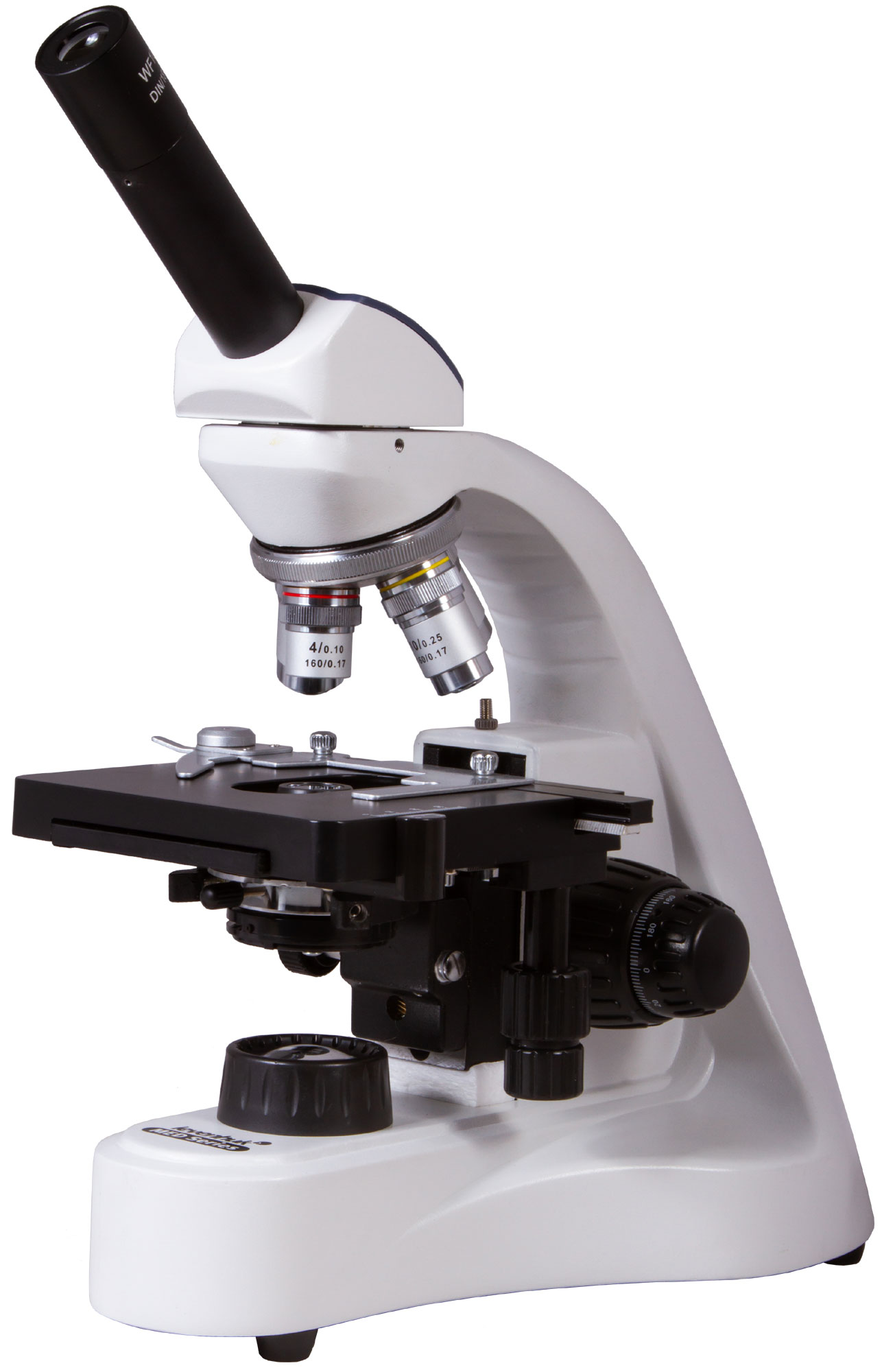Levenhuk MED 10M Monocular Microscope
Magnification: 40–1000x. Monocular head, achromatic objective lenses, and an Abbe condenser with an iris diaphragm, and a filter holder
| Product ID | 73983 |
| Brand | Levenhuk, Inc., USA |
| Warranty | lifetime |
| EAN | 5905555004853 |
| Package size (LxWxH) | 48x38x24 cm |
| Shipping Weight | 4.68 kg |
Levenhuk MED 10M Monocular Microscope is designed for conducting laboratory research on samples at up to 1000x magnification. This professional optical instrument features achromatic optics and fine focusing adjustment for any bright field observations. Levenhuk MED 10M Microscope is an excellent choice for equipping a medical center, scientific research center, clinical and diagnostic laboratory or microbiology department of a university.
The microscope has a monocular head with a practical 45° inclination angle, which provides for convenient extended observations. The 360° rotatable head allows for using this microscope for group research. The optical scheme uses achromatic elements with an anti-fungal coating. Objective lenses and an eyepiece feature a layer of this protective coating. The revolving nosepiece contains four objective lenses, two of them are spring-loaded. A 100x objective lens can be used for observations using an immersion method (a bottle with immersion oil is included in the kit). An eyepiece provides a good view and features diopter adjustment.
Coarse and fine focusing is used for sharpness adjustment. A mechanical stage is equipped with a mechanical scale and can be moved along two axes. Underneath, there is an Abbe condenser with an iris diaphragm and filter holder. A bright 5W LED light with brightness adjustment is used for illuminating. It is located in the lower part of a microscope. Illumination is powered by an AC power supply or batteries. The illumination system also features a brightness adjustment.
Features:
- Laboratory microscope with 40–1000x magnification
- 360° rotatable monocular head, inclined at 45°
- Achromatic optics with an anti-fungal coating
- Lower 5W LED light with brightness adjustment
- Powered by an AC power supply
The kit includes:
- Microscope base with a stand
- 360° rotatable monocular head
- Achromatic objective lenses: 4х, 10х, 40xs, 100хs (oil) with an anti-fungal coating
- Wide-field eyepiece: WF10x/18mm with an anti-fungal coating
- Abbe condenser N.A. 1.25 with an iris diaphragm and filter holder
- Filters: blue, green, yellow
- Bottle of immersion oil
- Fuse (2 pcs)
- Power cord for microscope
- Dust cover
- User manual and lifetime warranty
Caution:
Please refer to the specifications table for the correct mains voltage and never attempt to plug a 110V device into 220V outlet and vice versa without using a converter. Remember that mains voltage in the U.S. and Canada is 110V and 220–240V in most European countries.
Some things you can see under a microscope:





Levenhuk MED 10M Monocular Microscope is not compatible with Levenhuk digital cameras due to non-standard 21-mm eyepiece tube diameter.
| Product ID | 73983 |
| Brand | Levenhuk, Inc., USA |
| Warranty | lifetime |
| EAN | 5905555004853 |
| Package size (LxWxH) | 48x38x24 cm |
| Shipping Weight | 4.68 kg |
| Type | biological, light/optical |
| Microscope head type | monocular |
| Optics material | optical glass with anti-fungal coating |
| Head | 360 ° rotatable |
| Head inclination angle | 45 ° |
| Magnification, x | 40 — 1000 |
| Eyepiece tube diameter, mm | 21mm (internal), 26mm (external, with thread) |
| Eyepieces | WF10x/18mm |
| Objectives | achromatic: 4x, 10x, 40xs, 100xs (oil immersion) |
| Revolving nosepiece | for 4 objectives |
| Stage, mm | 125х130 |
| Stage moving range, mm | 70/50 (movement in horizontal (X and Y) directions) |
| Coarse focusing travel, mm | 21 |
| Stage features | mechanical double-layer |
| Eyepiece diopter adjustment, diopters | ±5 |
| Condenser | Abbe N.A. 1.25 with an iris diaphragm and filter holder |
| Diaphragm | iris |
| Focus | coaxial, coarse (30mm) and fine (0.002mm) |
| Body | metal |
| Illumination | LED |
| Brightness adjustment | ✓ |
| Power supply | 100–240V |
| Light source type | 5W |
| Light filters | blue, green, yellow |
| User level | beginners, experienced users |
| Assembly and installation difficulty level | easy |
| Application | laboratory/medical |
| Illumination location | lower |
| Research method | bright field |
| Pouch/case/bag in set | dust cover |
We have gathered answers to the most frequently asked questions to help you sort things out
Find out why studying eyes under a microscope is entertaining; how insects’ and arachnids’ eyes differ and what the best way is to observe such an interesting specimen
Read this review to learn how to observe human hair, what different hair looks like under a microscope and what magnification is required for observations
Learn what a numerical aperture is and how to choose a suitable objective lens for your microscope here
Learn what a spider looks like under microscope, when the best time is to take photos of it, how to study it properly at magnification and more interesting facts about observing insects and arachnids
This review for beginner explorers of the micro world introduces you to the optical, illuminating and mechanical parts of a microscope and their functions
Short article about Paramecium caudatum - a microorganism that is interesting to observe through any microscope






















